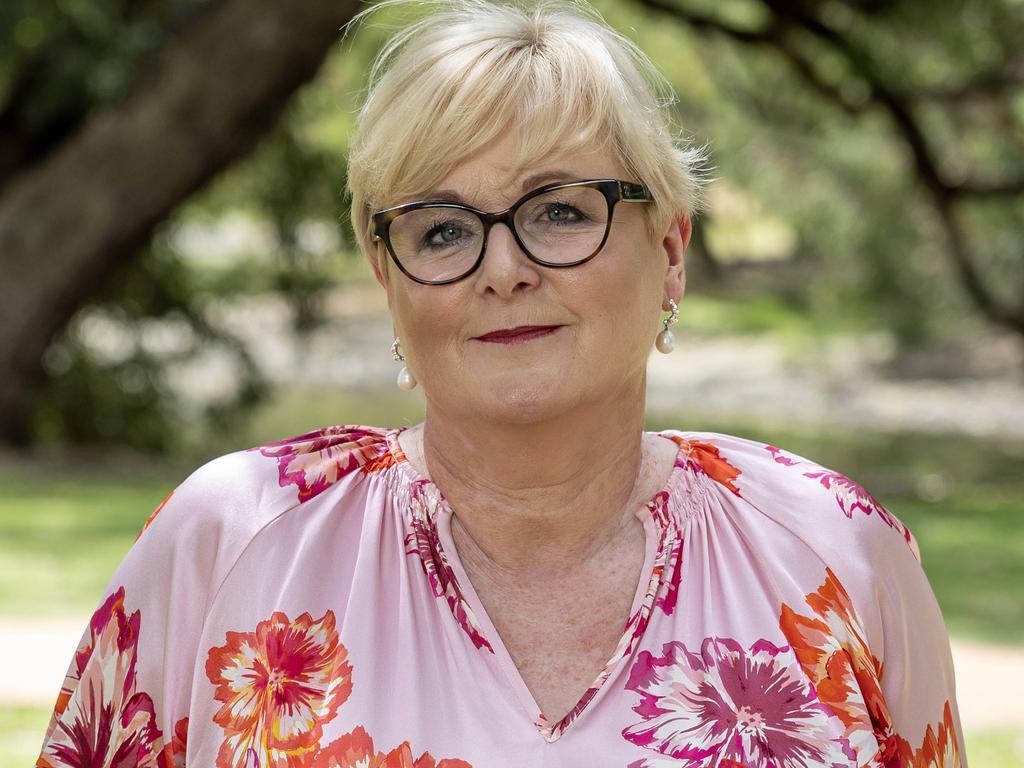
“Yesterday, upon the stair, I met a man who wasn’t there. He wasn’t there again today, I wish, I wish he’d go away …”
For a lowbrow culture equivalent, try Where’s Wally. Sharaz, like Wally, is nowhere but also everywhere once details come into focus in the Brittany Higgins scandal. Yet he never comes within cooee of a witness box. Once again, as Linda Reynolds’s defamation action draws to a close in Perth this week, Sharaz won’t be called to defend his wife.
Reynolds is running two arguments about Higgins’s four allegedly defamatory social media posts. First, Higgins’s former boss says the alleged defamation warrants aggravated damages because there was “a plan” conceived and implemented by Sharaz and Higgins “as a weapon to inflict immediate political damage” on Reynolds and the then government of the day. In the alternative, Reynolds is pleading a tortious conspiracy between Shiraz and Higgins to injure her.

Neither of the two central characters will be giving evidence. Sharaz’s absence may possibly be more problematic for Higgins’s defence.
Higgins’s lawyer, Rachel Young SC, told the Western Australian Supreme Court last week her client would not be giving evidence because of her medical state, and because they believe there is enough evidence to succeed without Higgins entering the witness box. As an aside, now Higgins has chosen not to give evidence, one wonders if she still believes the legal system “silences women”?
Justice Paul Tottle may choose not to draw a Jones v Dunkel inference from Higgins’s non-appearance as a witness for her own side if there are sufficient reasons for her absence. In short, this 1959 High Court decision says that if one side doesn’t call a person to give evidence who may have shed light on the case, and there is no acceptable explanation as to why they don’t give evidence, then the court may draw an inference that their evidence would not have assisted that party’s case.
The inference may carry more weight when it comes to Sharaz. There is no person so central to this saga, apart from his wife. He could appear by video link if he is not in the jurisdiction.
If Sharaz entered the witness box, he might be cross-examined by legal heavy hitter Martin Bennett about his role in Higgins’s decision, against police advice, to take allegations of a rape and a political cover-up to the media before making a formal complaint to the police.
In May 2020, shortly after the pair met, and some 14 months after the alleged rape, and nine months before The Project interview, Higgins crafted a note on her phone about an “anatomy of a political sex scandal”. That was not allowed into evidence in the ACT criminal trial against Bruce Lehrmann.
We don’t know what Tottle will make of Sharaz and his role. But we do know what Justice Michael Lee said about him in the defamation action by Lehrmann against Network Ten and Lisa Wilkinson. Lee more than once queried why Sharaz was not giving evidence. The judge quipped during the trial that Sharaz was “like the prophet Elijah … there’s a place for him at the table but he never turns up”.
In his judgment, Lee described Sharaz’s entrance into the Higgins-Lehrmann imbroglio, just prior to arrangements for Higgins to appear on The Project, as the point when rape allegations turned into what the judge later called the “major motif” – claims of a political cover-up against Reynolds, her then chief of staff, Fiona Brown, and the Morrison government.
“The articulation of the core aspects of this claim commenced shortly before Ms Higgins’s boyfriend, Mr Sharaz, made the necessary arrangements for Ms Higgins to tell her account,” the judge observed.
As Lee said: “Mr Sharaz could hardly have chosen a more glaring heading”, in his emails to The Project: “MeToo, Liberal Party, Project Pitch.”
Sharaz, said Lee, reinforced “a conspiratorial and political theme” to the story.
In the WA Supreme Court, Sharaz could have been cross-examined on his role in the selection of journalists who received an email with a “timeline” of Higgins’s allegations. Despite Higgins’s claim that the document was hers, Lee found that Sharaz was one of the authors.
Sure enough, excitable journalists and politicians, of all stripes, peddled the political cover-up narrative that the Federal Court judge found was notable for “not only its inconsistency with the contemporaneous records and its falsities, particularly as to Ms Higgins’s dealings with Ms Brown, but also its imprecisions and its reliance upon speculation and conjecture”.
Sharaz could have been cross-examined on being the recipient of an audio message from Higgins, with her telling him she was “cleaning out my phone ahead of the police”.
Sharaz could have been asked why, as Lee found, he had introduced the photo of Higgins’s bruised leg to Wilkinson as corroboration of the alleged rape. (Higgins gave evidence during that earlier trial that she accepted it wasn’t caused by the alleged assault – despite her earlier claims that it was).
Sharaz could have been cross-examined on his role in ramping up Higgins’s claims into political pandemonium. After all, he told Wilkinson he and Higgins agreed the story should break during the parliamentary sitting week in February 2021. Sharaz told Ten: “I’ve got a friend in Labor, Katy Gallagher on the Labor side, who will probe and continue it going.” Sharaz liaised with his “friend” Gallagher, sharing the Project transcript with the Labor senator before it aired.

When Wilkinson told Higgins and Sharaz during that five-hour chat “I’m a great believer in people’s time will come”, it was Sharaz who responded: “Linda’s time, please god, let it be Linda’s time.”
Sharaz might have been asked about these messages too, when he texted his girlfriend in March 2021, “suck shit Linda … You awful human”.
Sharaz could have been cross-examined about him exchanging hundreds of text messages with news.com’s Samantha Maiden – as the WA Court heard last week, including these just days after The Project interview: “I can see why PMO hate us. It all looks planned haha.” And: “It’s a weird story. Journalism hat on, what a f..king scoop ha ha.”
And this one: “No one goes for Morrison and gets away with it.”
Was Sharaz going for Morrison?
Given his unrivalled role in what Lee dubbed the “omnishambles”, Sharaz could surely shed light, one way or the other, on Reynolds’s claims of a plan by, or a conspiracy between, himself and his now wife. Yet he’s avoiding the legal spotlight – again. Why isn’t he defending his wife?
Defamation cases are high-stakes games of strategy and risk management, normally plotted out carefully from the start. No one should imagine that Young’s announcement last week that she would not be calling her client was decided mid-trial. Given Lee’s findings against Higgins’s credibility about a political cover-up, her legal team would be crazy to call her. Ditto Sharaz, the Where’s Wally of this godawful saga.
Only a fool would try to guess the outcome of this case. But it’s not hard to guess that hearing from the proverbial horse’s mouth may have made it a whole lot worse for Higgins.






The poem, The Little Man Who Wasn’t There, has been mentioned before in dispatches about David Sharaz. Better known as Antigonish, the 1899 poem by Hugh Mearns was apparently inspired by a male ghost wandering the stairs of a haunted house in the Nova Scotia town of Antigonish.